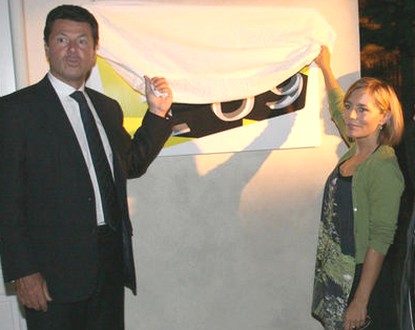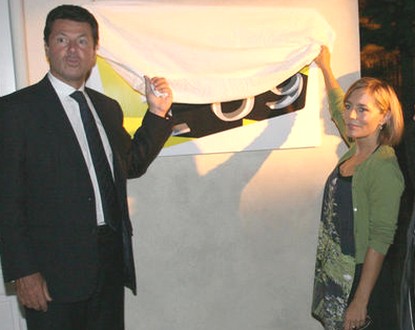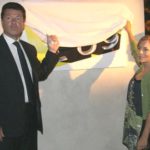Light has recently, and once again, been shed on this project that was meant to be a major event in the cultural policy of the new municipality when it was announced in 2008.

Back then, the matter sparked numerous controversies and generated much ink as to the actual reasons for Sophie Duez’s politico-ideological maneuver: Personal ambition? A practical job? It even led to some untimely gossip. No matter.
Four years have passed since and… the project is still in its embryonic stage. The question is therefore legitimately raised regarding the reasons, with everyone providing their own answers and motivations. A bit of light on this subject can only be beneficial.
Nice Premium is responding to this topic with three articles aiming to be a compendium addressing the situation of cultural centers like Sang-Neuf and the cultural policy of the City.
As for Sophie Duez, reading her various statements leaves one somewhat puzzled: “… It’s as if I were writing a show for my city.” concerning her commitment “… If I’m focused on the slaughterhouses, it’s because I felt there the symbol of loss, emptiness, abandonment” which she goes on to define as “A transdisciplinary eco-urban platform for the self-productive cultures of the 21st-century smart city.” …
It’s true that the same Sophie Duez describes herself as “a citizen artist… more in the imagination than in the intellect” and self-defines as “always out of sync.”
However, since this is a public mission that will require a substantial investment budget (it is said to be in the tens of millions of euros), and even if patience should be above all a republican virtue, it might not be too much to ask for the designer of this future “permanent living place” for a new generation of visual artists, as desired by the mayor of Nice, Christian Estrosi, to realign with the compass (which defines the general rules) and keep the course (the values) of this project, moving away from the lyrical tones worthy of a Doctor Seraphicus.
Thus, finally, Sang Neuf 109 could be a cultural project like many others, possibly without an exorbitant cost for disappointing results as unfortunately many are.
It’s just a matter of going “from darkness to light” as our Anglo-Saxon friends would more pragmatically say!
SPACES IN ABANDONMENT
Former wastelands, factories, or abandoned businesses, because they no longer interest economic players, become vacant lots, relics of human activity and fossils of this industrial revolution that was supposed, in principle, to open up a promising and progressive future for humanity.
It has not been the case and these factories, which have become costly and useless, have been closed, relocated where the cost of labor and production was less significant and are thus today rotting concrete skeletons slowly disintegrating, rusted scrap metals, and wall sections eroded by the wear and tear of time. It is in these places that artists will intervene, in order to breathe life, spirit, and thus life back into these abandoned industrial activity centers.
Several examples have thus developed, each asserting its own specificity and character, has been able to affirm and exist itself. The guiding line of these multiple wastelands is based on an opposition to the concepts of competition and rivalry “You must be winners.” and Albert Jacquard adds: “But what is a winner, if not a maker of losers.” Everything is said in this phrase and the losers will become these zones of artistic activity.
Many provincial cities: Nice with 109 Sang-Neuf at the former slaughterhouses, Marseille and La Belle de Mai behind the Saint Charles station, Lyon and La Sucrière in Mulatière, Grenoble with 102 and Brise Glace, Bourges and Antre Peaux, Mix’Art Myrys in Toulouse, Fructose in Dunkirk, slaughterhouses (there too) in Toulouse, or Dijon with the Autonomous Cultural Center, assert this right to Cultural Democracy.
The artists mobilizing in these industrial centers where no smoke stains the sky with soot clouds anymore, want to give back a life to these factories whose heart has stopped beating. “Make useful what is no longer so and above all be useful.” One could make it their motto. There is here a questioning, a desire to give a life back to these structures abandoned by both industrialists and developers.
These artists, almost all of whom are volunteers, are pioneers. They offer us a new society, a new concept of economic exchanges where profit would no longer be the engine of society. They dream of surpassing the post-industrial society. They wish to assert new values, new foundations of social belonging, thereby returning to society and man his ability to dream and imagine in a certain way.
These wastelands therefore carry a condemnation of the production and consumption society. It goes beyond economic data by giving, or rather offering creation values that transcend them. This should allow to reactivate these places by giving them a new purpose. They will become productive again, and the artists will be the new producers there.
It is up to them to create and give a new impetus where production will be sustainable over time and their work eternal, belonging to the heritage of humanity. These spaces in abandonment are gradually coming back to life all over France. In Nice, 109 Sang-Neuf attempts to meet this challenge.
However, it should not overreach like the frog in the fable, for its success would be threatened.
by Thierry Jan



